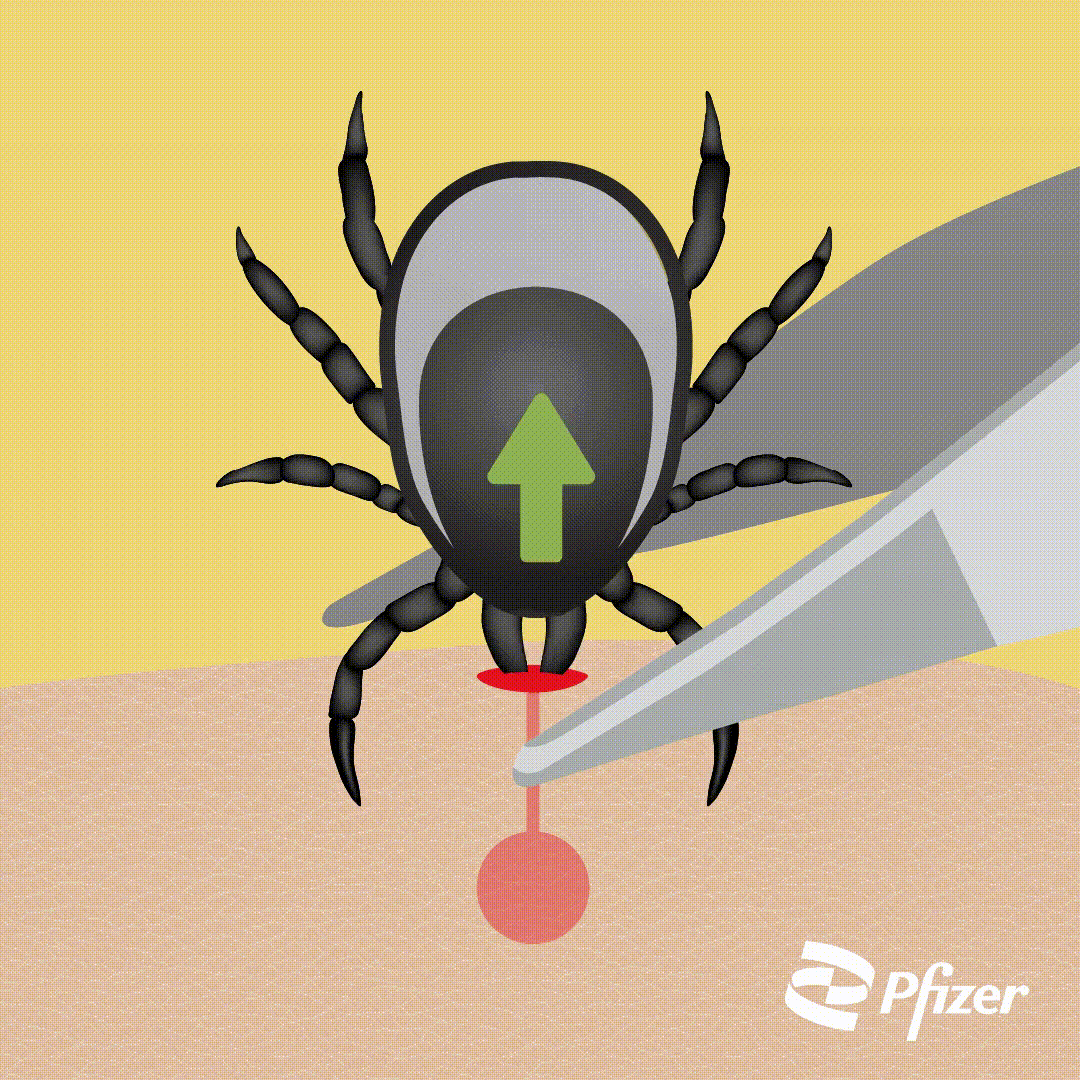Tick Removal Guide

To remove a tick safely, it is best to use a fine tipped tweezer or a tick-removal tool which you can buy online or in some pharmacies.1
Step 1: Grasp the tick as close to the skin as possible by its head.1
Step 2: Slowly pull upwards, taking care not to squeeze or crush the tick.1
Step 3: Clean the bite with antiseptic or wash it with warm water and soap.1
WARNING: Avoid squeezing the body of the tick and the contents of its stomach into the site of your bite.
Several attempts may be needed to remove a feeding tick successfully. Do not despair if you are unable to remove a tick with your first try.
Mark the date of the bite in your calendar and monitor for any symptoms.1
Be Aware
After the tick has been removed, a small part of the tick’s mouth may remain in the wound. This is not dangerous, and it will disappear after a couple of days.1
When should I seek medical help?
You should seek medical advice if you’ve returned from an area or country with identified risk of tick-borne encephalitis (TBE) and you start to experience flu-like symptoms,1 even if you had not previously noticed a tick bite.
If you do experience a tick bite, you should speak to a GP, another medical professional or call NHS 111 if the affected area doesn’t start to heal after a couple of days or if you fall ill within one month of being bitten by the tick.1 If you experience more severe symptoms, such as loss of movement in part of your body, call 999 or go to A&E.2
Explore
Check for TBE symptoms
Find out the signs and symptoms of TBE.

Find out more about ticks
Find out about where ticks live, when they are active and how they transmit disease.

Find out more about the TBE risk factors
Find out your risk of TBE exposure based on where you live, where you are visiting, the time of year and activity type.